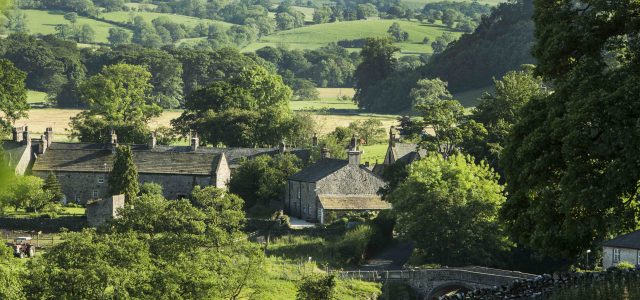
SLAIDBURN
If you are in the Forest of Bowland make sure you visit the fascinating village of Slaidburn
If any one place within the Forest of Bowland has a claim to be its capital, it is certainly Slaidburn. This charming settlement of the mid-Hodder valley reached its zenith in Norman times, when it became the administrative centre of the district during the days of the De Laceys of Clitheroe Castle. Its population probably reached a maximum in the early 1700s. Today, Slaidburn, whose Norse name means ‘sheep pasture by the stream’, is a must place for visitors, and never fails to fascinate.
Slaidburn is elusive, tucked out of sight in a fold of the Bowland fells, breaking into view at the last moment as you negotiate the steep hairpin bend on the B6478 from Long Preston, or drop into lower Croasdale from the Bentham road.
To this day Slaidburn remains a true estate village. From 1855, the estate has been owned by the King-Wilkinson family, and since 2011 it has had a female squire for the first time. Mrs. Anthea Hodson and her husband now live at Rock House, a fine Georgian building and one of the squires’ traditional residences. In earlier times the Wigglesworth family held the estate, and lately Townhead, former residence of Henry Wigglesworth, has been impressively restored occupying a fine position above Croasdale Beck immediately north of the village.
Henry Wigglesworth is also associated with arguably Slaidburn’s best-known building, the Hark to Bounty Inn.
Wigglesworth was both squire and local magistrate, and Bounty was his favourite dog. Part of the inn, which stands at the T-junction in the village centre, was still used as a courthouse within living memory; the courthouse dates from 1590. It is likely, according to records dating back to Queen Elizabeth I, that an earlier courthouse stood near the river by the village green.
If you make a systematic tour of the village, then as so often the parish church, St. Andrew’s, makes an excellent start. The present building is largely a 15th century construct, rebuilt by the Hammertons, but there is clear evidence that a church has stood here from Saxon times. Within the church you will find a most striking three-decker pulpit, the separate levels for verger, parson and preacher. The interior was considerably affected by Puritan cleansing, but some fine tablets behind the altar were retained and the Norman font has been restored. There was also a Methodist church in the village until very recently, by the village green near the river. This closed as a place of worship in 1999 but has been restored as a fine new village hall.
The village still boasts its own first school, adjacent to the parish church, originally founded as a boys’ grammar school by John Brennand’s bequest in 1717, it became a primary school in 1947, and lately a modern pre-school facility has been added. Appropriate celebrations for the school’s 300th anniversary are planned for later this year.
As you walk back towards the village centre from here, you pass a row of old cottages, which include the Slaidburn Archive, formerly the Heritage Centre.
The primary purpose of the archive was for families to trace their descent, but its scope has now expanded to include broader records of the village and the land use of the district. At present it is open to the public on Wednesdays and Fridays from 11am to 3pm, but check the informative website (www.slaidburnarchive.org) if you are planning to visit. Jenny Bradley and Helen Wallbank have been rightly praised for developing this facility, which should point the way for other villages seeking to preserve and document their heritage. Jenny also wrote a most informative booklet, ‘Slaidburn: A Walk through the Village’ from which I have drawn freely. Do buy a copy if you can!
Most likely you will have parked in the main village car park near Slaidburn Bridge, with the café, formerly a joiner’s shop, adjacent. Time, then to enjoy a welcome ice-cream or other snack, or even a full lunch, and reflect on your visit to this fascinating village – whether during the quiet of an out of season evening or among the bustle of a summer afternoon, there is nowhere else quite like this.
Andrew Stachulski and Helen Shaw are the authors of ‘The Forest of Bowland’
www.merlinunwin.co.uk

